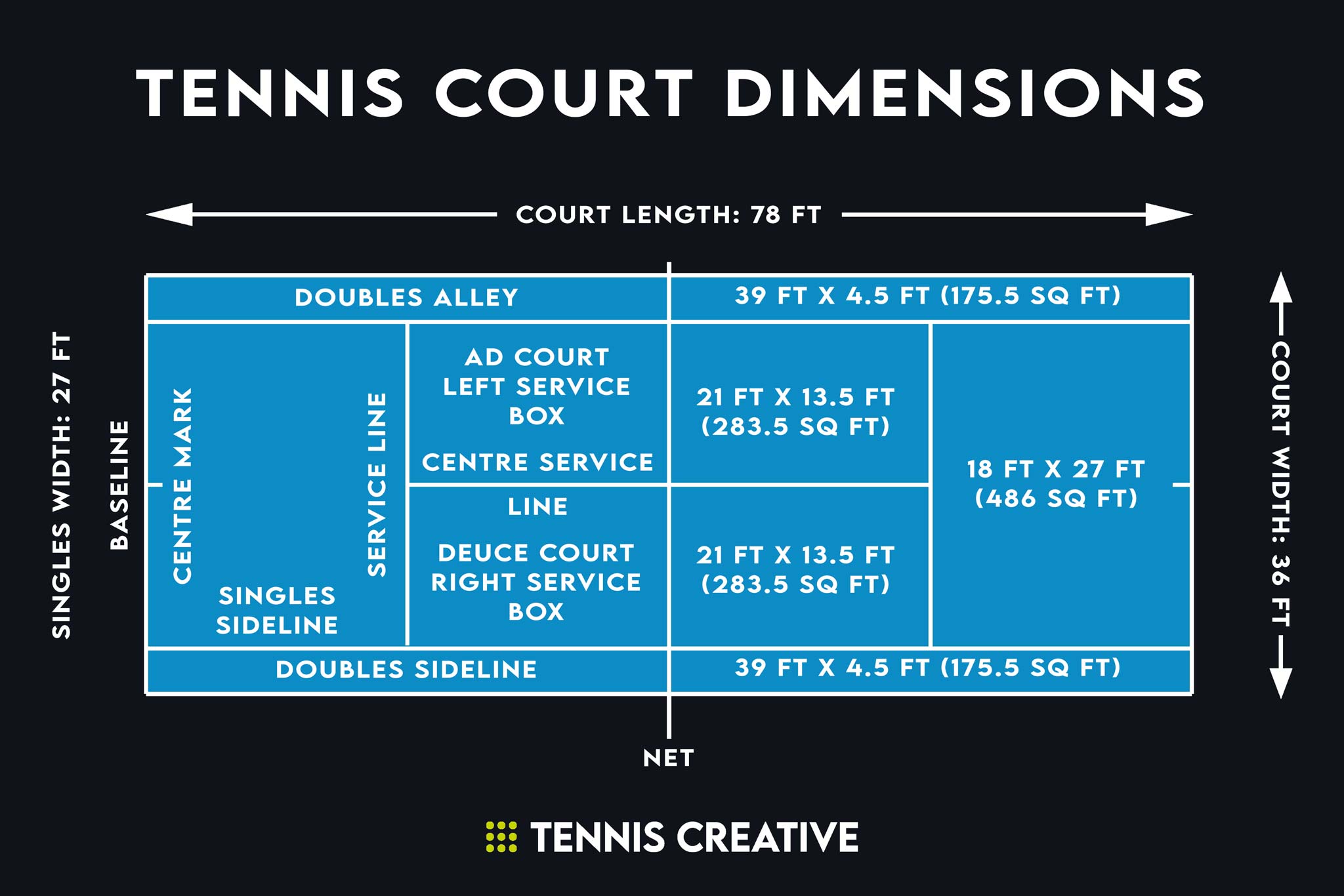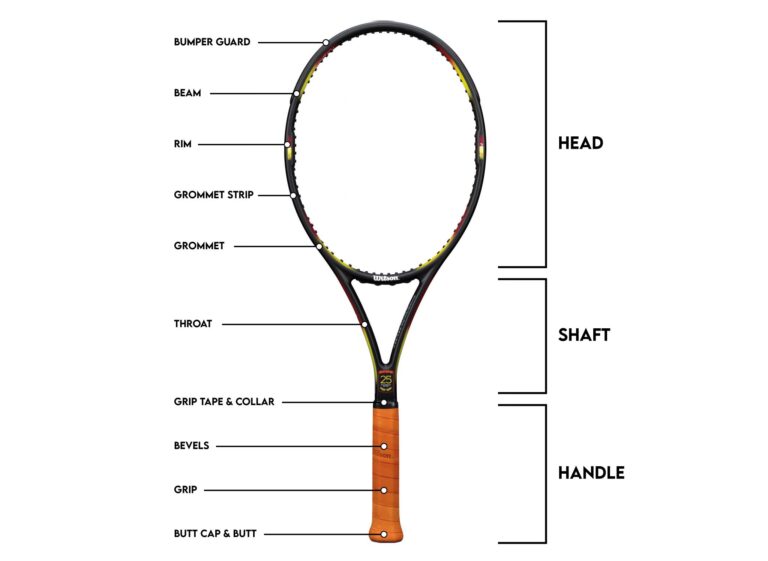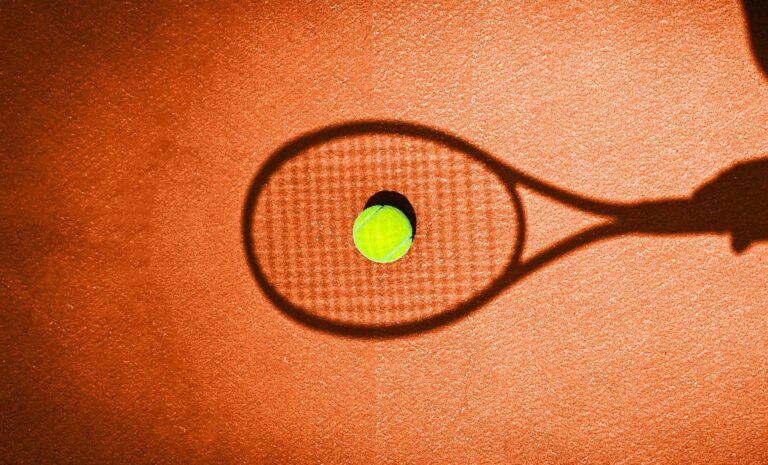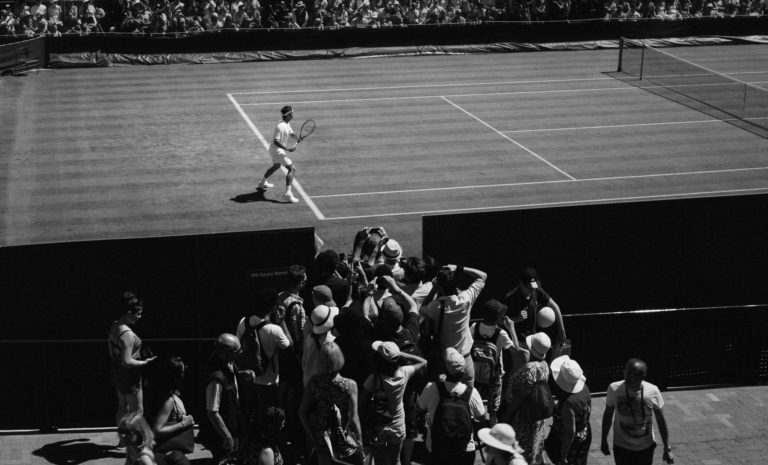Whether you’re completely new to tennis or you’ve been playing the sport for a while, it’s worth having a rough idea of what the dimensions of a tennis court are. So, we’ve put together a tennis court dimensions guide to tell you everything you need to know about a tennis court, from all the important lines to the height of the net and even the spacing around the court.
Standard Tennis Court Dimensions
Standard tennis court dimensions are defines by the International Tennis Federation (ITF). The ITF distinguish between two types of tennis court: tennis courts for recreational play and tennis courts at a tournament level. The dimensions of the court itself are the same for both, though there are significant differences to the amount of space needed around the tennis court, but we’ll talk a little more about that later. All dimensions in this article are according to the official ITF Rules of Tennis.
Key Tennis Court Dimensions
There are many lines and dimensions on a tennis court, so if you’re just looking for the short version, here are the key dimensions of a tennis court:
- Tennis Court Length: 78 ft / 23.77 m
- Tennis Court Width: 27 ft / 8.23 m (Singles), 36 ft / 10.97 m (Doubles)
- Tennis Net Height: 3 ft / 0.914 m (at the centre)
Tennis Court Diagram

The Lines of a Tennis Court
Baseline: 27 feet (Singles) / 36 feet (Doubles).
The baseline is the line furthest from the net on either side of the court, running parallel to the net. The baseline limits the length of the court and is the line the players serve from.
Centre Mark: 4 inches long.
The centre mark is the small division line on the baseline that divides the court into two halves. It’s primarily used as a guide to determine where a player should stand when serving.
Service Line: 27 feet wide.
This is the line running parallel to the net, half way between the net and the baseline. It marks the length of the service box. When serving, the ball must bounce in front of the service line.
Centre Service Line: 21 feet long.
The centre line is the line running perpendicular to the net from its centre and divides the service boxes, setting out the deuce side and the advantage side of the court.
Singles Sidelines: 39 feet long.
The singles sideline is the innermost line spanning the entire length of the court (perpendicular to the net). There are two per court, one on the left and one on the right, and they limit the width of the court.
Doubles Sidelines: 39 feet long.
The doubles sideline is the outermost line spanning the entire length of the court (perpendicular to the net). There are two per court and limit the width of the doubles court. As the name suggests, the doubles sidelines only come into play in doubles tennis.
It’s also worth knowing that the thickness of each line also varies according to official rules. The centre mark should be no wider than 4 inches, the service line and centre service line should be 2 inches wide and all other lines on the court should be between 2-2.5 inches wide.
The Areas of a Tennis Court
Tennis Court Area: the overall surface area of a tennis court is 2,106 square feet / 195.7 square metres in singles and 2,808 square feet / 260.9 square metres in doubles.
Service Boxes: each of the service boxes is 21 feet long and 13.5 feet wide, making the area of a service box 283.5 square feet. The service boxes are the zones the ball must land in when serving.
No Man’s Land / Backcourt: this is the area at the back end of the court, stretching from the service line to the baseline and is 18 feet long and 27 feet wide (486 square feet). This is usually a part of the court you should avoid as you’ll generally be too close to the net for a groundstroke and not close enough for a volley. When standing in No Ma’s Land, you’ll find the ball landing at your feet, making it an extremely uncomfortable position to be in.
Doubles Alleys: the doubles alleys are 39 feet long and 4.5 feet wide, making the area of each of them 175.5 square feet). As mentioned before, the doubles alleys are only used in doubles tennis.
Tennis Net Dimensions
The Net: 42 feet long and 3 feet high at the centre (3.5 feet high at the net posts).
Contrary to popular belief, a tennis net is not completely straight. At the centre it measures at 3 feet tall (0.914 metres), though at either net post it measures at 3.5 feet if a doubles net is used, which is common in modern tennis. The white band or tape, often referred to as the net chord, is found at the top of the net and should be between 2-2.5 inches deep.
Net Posts: 3. 5 feet tall (that’s 3 feet 6 inches) and a maximum of 6 inches wide.
The permanent net posts used on tennis courts depend on the type of tennis they are used for. In modern tennis, most courts are designed to be used for both singles and doubles tennis. As a result, the net posts are usually positioned 3 feet outside the doubles sideline.
Singles Sticks: 3.5 feet tall and a maximum of 3 inches wide.
When playing singles on a court with a doubles net, singles sticks should added to the court, positioned 3 feet outside the singles sideline, used to prop the net up. As we mentioned, most tennis courts are now built as doubles courts, so singles sticks should be used when playing singles matches. If you watch closely, you might be able to spot them on tv when watching professional tennis matches, though they are rarely used at lower competition levels such as in university tennis.
Tennis Court Surroundings - Area Around the Court
Generally speaking, the dimensions of a tennis court should always be the same, though the space surrounding a tennis court can vary massively from court to court and from venue to venue. The amount of space around a tennis court can be just as important as the dimensions of the court itself, and it’s not uncommon for tennis courts to have a lack of space around them, particularly at a recreational level.That being said, most registered tennis clubs meet the minimum requirements. The ITF defines a minimum amount of space needed around a tennis court, though it varies depending on the purpose of the tennis court.
- Court Surroundings at a recreational level: as a guideline, the minimum recommended distances required around a recreational tennis court are 18 feet (5.49 metres) behind the baseline and 10 feet (3.05 metres) to either side.
- Court Surroundings at tournament/professional level: as a guideline, the minimum recommended distances needed around a court are 21 feet (6.40 metres) behind the baseline and 12 feet (3.66 metres) to either side of the court.
The ITF also recommends a minimum amount of space of above a tennis court, which is particularly relevant for indoor tennis courts. As a guide, the recommended minimum height measured at the net from the court
surface to the ceiling should be 29.6 feet (9.0 m).
Frequently Asked Questions
Are tennis courts different sizes?
All registered tennis club courts and and courts used at a tournament level are the same size. Only the space surrounding the courts themselves changes from one court to another. There are minimum requirements for the space surrounding a court at a tournament level, but it can vary massively at a recreational level.
How big is a tennis court in square metres?
A tennis court is 23.77 metres long and 8.23 metres wide for singles or 10.97 metres wide for doubles (including the doubles alleys). The overall surface of a tennis court is 195.6 square metres in singles (excluding the doubles alleys) and 260.9 square metres for doubles.
How much space do you need to build a tennis court?
When building a tennis court, the suggested minimum length of the court is 120 feet and the minimum width should be at least 60 feet. With that in mind, you’ll likely need at least 7,200 square feet to construct a tennis court. This takes into account the dimensions of the court itself as well as the necessary space surrounding the court.
And that’s everything you need to know about the dimensions and layout of a tennis court. If you have any questions, feel free to let us know in the comments section below!




